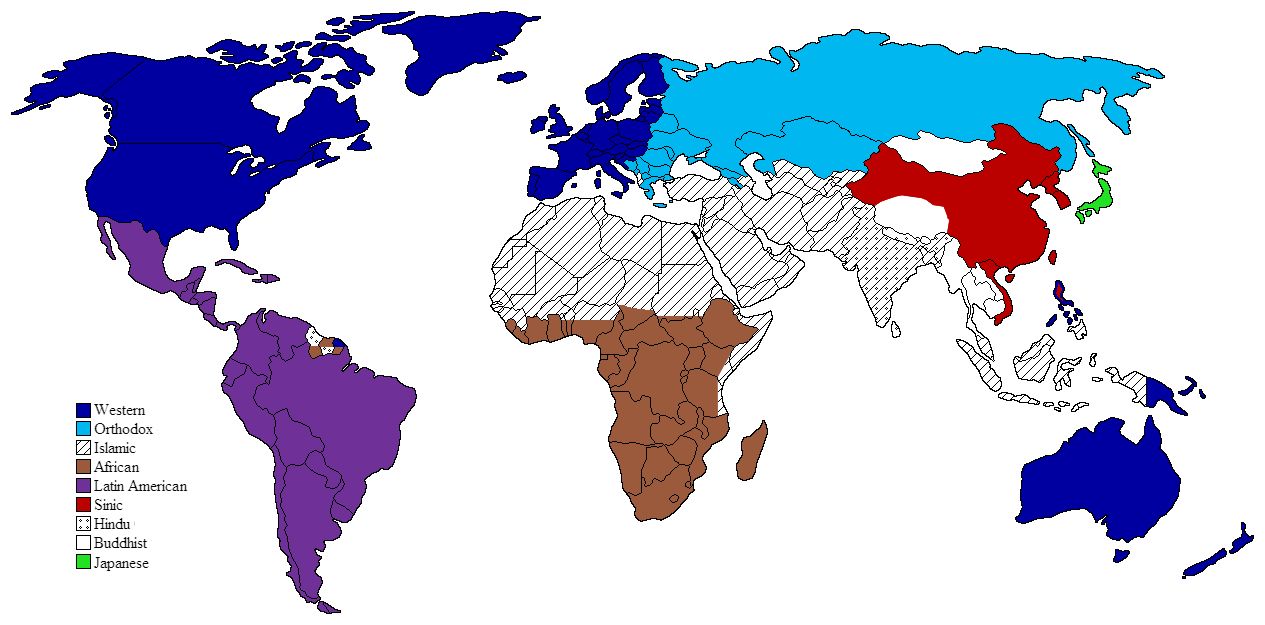What exactly is the "clash of civilizations" theory?
Following the end of the Cold War, culturally distinct groups were predicted to clash, according to the so-called "clash of civilizations" theory.

The "clash of civilizations" is an international relations theory from the 1990s that said conflicts between groups with different cultures would happen after the Cold War. Samuel P. Huntington, an American political scientist who lived from 1927 to 2008, came up with this idea. First, he wrote about it in an article for Foreign Affairs magazine in 1993. Then, in 1996, he wrote a book about it.
The idea of a "clash of civilizations" came up after the Cold War was over. Huntington tried to figure out how the fall of the Soviet Union would affect international relations and conflicts in a scenario where the world order would change a lot. He concluded that the wars of the 21st century might not be between countries but rather between cultural groups, or "civilizations."
Huntington named eight of the most important ones: Western, Islamic, Orthodox, Japanese, African, Hindu, Sinic or Confucian, Latin American, and Buddhist. This grouping took into account things like religion, language, history, traditions, institutions, and how people as a whole see their rights, responsibilities, and freedom.
Why do civilizations "clash"?
Huntington says that the Western, Confucian, and Orthodox civilizations are the most important. Western civilization is made up of Europe, North America, and the big countries in Oceania. The United States is in charge of this group. Eastern Europe and Western Asia are all part of the Orthodox civilization, which is led by Russia. And China and some other countries are in the area of influence of the Confucian civilization.
The other cultures do not have a country that is in charge: Central and South America are part of the Latin American civilization. Sub-Saharan Africa is part of the African civilization. The Middle East and North Africa are part of the Islamic civilization. The area of India, including both Hindu and Buddhist cultures, is part of the Hindu and Buddhist civilizations.

Huntington said that there are countries like Turkey, Mexico, and Russia where different civilizations live together but are more likely to break up. None of them are part of Western civilization. Instead, they are part of the Islamic, Latin American, and Orthodox civilizations, but they have moved closer to it by adopting its values or joining its organizations, which has caused a cultural split within each of them.
Huntington said that there were two reasons why civilizations would fight with each other. On the one hand, globalization has made it easier for people from different cultures to meet each other, which makes it more likely that they will fight. On the other hand, the cultural traits of a group are closely tied to its identity. This is a much bigger source of conflict than the political and economic issues that caused the Cold War, and it makes "us" and "them" seem even more different.
These big differences between civilizations would lead to wars that would be the main focus of world politics after the 1990s. Huntington thinks that if there were to be another world war, it would be between civilizations. If there were to be another world war, coalitions of countries with the same culture would form, and they would tend to help each other. Even so, there could still be fights between people from the same civilization, but they would be less serious.
Has the "clash of civilizations" theory come true?
Huntington thought that after the fall of the USSR, a weaker Russia would join the West. The Islamic and Confucian civilizations would be the West's main enemies at that point.
Even though these are the ones that have grown the most in the last few decades, Western civilization is still the most powerful because of its strong political, economic, and military positions, and the Russians have not become a part of it. On the contrary, they are very different.
Faced with the possibility of a "universal civilization" based on Western ideas, Russia and other countries have tried to set themselves apart without becoming Westernized by making up for their political and economic weaknesses and building their military power.
But the theory of the clash of civilizations has been criticized for making the world seem too simple by focusing on only eight major groups and how they interact. jihadist terrorism, which is seen as a clash between Islamic and Western cultures, is one of the things that is most often used as an example of the so-called "clash of civilizations."
But most jihadist attacks happen in countries that are part of the "Islamic civilization," and most of the people who die in these attacks are also Muslims. In the same way, there are countries like Israel, Ethiopia, Guyana, and Suriname that don't fit well with Huntington's theory because they don't have the cultural traits that people think they should have based on where they are.
Source: El Orden Mundial, Author: Patricia Moreno
Madrid, 1997. Graduated in International Studies at UC3M and a Master's in Geopolitics and Strategic Studies at the same university. Interested in national and international security issues, jihadist terrorist groups, and socio-political dynamics in Africa and the Middle East. Dedicating free time to travel by reading and reading while traveling.




